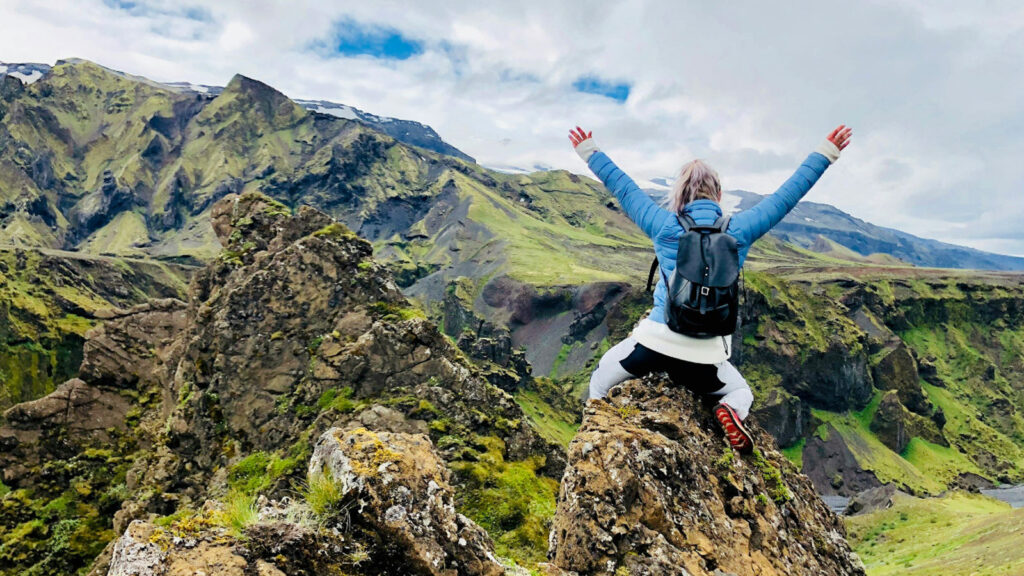LONDON, UK – Independent charity, the Safer Tourism Foundation revealed the findings from the inaugural Travel Behaviours Risk Index*, a new measure of UK travellers’ risk perceptions and behaviours on holiday. Chief among the findings; 76 percent of travellers are more open to new experiences on holiday and to trying things they would not try at home.
The Travel Behaviours Risk Index is based on a survey of 2000 UK travellers, conducted by OnePoll and reveals how risk perception influences destination choice, holiday provider selection and how people behave on holiday. Insights from the inaugural research reflect how optimism biases and social influences all contribute to a phenomenon Safer Tourism dubs ‘The Holiday Head’; the propensity to behave on holiday in ways you wouldn’t at home.
Risk and safety play a part in travel decisions, but outranked by cost, weather, even food
Risk and safety concerns are front of mind when travellers are considering where to go – 4 in 5 travellers (88%) consider low risk and high security as important or very important when they are deciding on a holiday destination. However, when asked to rank their priorities when choosing a destination, risk and security levels are far from the top of the list. Looking at the top 10 priorities, risk levels and the safety of the destination comes in 8th, behind other criteria such as cost, destination type, weather, accommodation, food and ease of access.
Holiday head at play? Yes. When asked directly if safety and risk are important criteria for destination selection, respondents overwhelmingly tell us they are. But once enjoyment factors are factored in – such as weather, food and accommodation standards – the rational mind takes a back seat.
Most travel incidents are caused by a mix of factors
While accidents and safety issues are relatively few and far between, they do happen! In fact, nearly 1 in 10 travellers have experienced some kind of serious incident while on holiday, and the same proportion again report incidents happening to their travel companions.
The Safer Tourism Index reveals the health and safety incidents most frequently reported by travellers, with serious sickness, injuries and allergic reactions topping the list.
Out of depth or out of shape?
Safer Tourism’s own incident data, collected in partnership with Safer Tourism Pledge partners and representative of 7 million outbound UK leisure trips, reveals several incident types occurring due to a mismatch between a traveller’s fitness level or physical capability and the type of holiday they are on or activity they are doing. This is noticeable with incidents happening in open water, while cycling or even as the result of a strenuous hike or lengthy walking tour.
Respondents that reported feeling out of depth in an activity or a mismatch in capabilities were asked why they believed this had happened – and the results show the Holiday Head at work!
Forty four percent felt the incident was down to an ‘overestimation of their own physical abilities or fitness/mobility levels’. In fact, one in five respondents admitted they would try a more strenuous hike or cycle ride than they would attempt at home.
One in four (24%) said they ‘didn’t want to miss out on what their travel companions were doing’ and one in five (21%) went so far as to admit they simply ‘threw caution to the wind’.
Holiday head at play? Yes. Changes in our physical capabilities can be hard to accept. Most people don’t want to believe or acknowledge that they perhaps can’t do everything they could do when they were younger, fitter or more mobile, especially when on holiday.
Safer Tourism Foundation CEO Katherine Atkinson comments; “Ask almost anyone over the age of 30 and they will tell you that in their heads they feel younger than their years. It’s completely normal to want to do the things we used to do when we were younger, or fitter, especially when we’re on holiday. The same applies after an injury or an illness – we may struggle to do all the things we used to do, or to do them at the same level. That can be very hard to accept, and so our ‘holiday head’ can convince us to carry on as if nothing had changed, leading us to attempt things we know, in the cold light of day, aren’t quite right for us. Add to that the optimism bias that abounds when we’re on holiday, and we can find ourselves – quite literally – out of our depth,” continues Atkinson.
Travellers are not solely to blame however – one in 7 travellers believe there was a mismatch between the type of activity or holiday recommended by their travel provider, while another one in 10 said that ‘no alternative activities were offered’.
Travel providers have an important role to play when it comes to helping customers choose a holiday and activities that are right for them – and that means exploring sensitively individual customer capabilities and suggesting alternatives that will still meet each customer’s holiday goals.
Best laid plans vs Holiday Head
The Safer Tourism Index shows that travellers are at their most rational when planning and preparing for their trips. The risk comes ‘in the moment’.
Most travellers (34%) want both their holiday destination and the activities they take part in to be safe. When asked what people worry about when travelling, the biggest concerns are food and water hygiene (37%), travel insurance coverage (22%), accommodations safety standards (21%) and avoiding being the victim of crime (20%).
Travellers report taking a lot of precautions before heading off on holiday, from buying travel insurance and packing sunscreen, to researching cultural norms, crime levels and local laws.
However prepared, an overwhelming majority (76%) of travellers acknowledge that they are more open to trying things they wouldn’t at home while on holiday. This is very much part of the joy of travelling and a lot of good can come of it. This spirit of openness to new things is evident in the types of experiences travellers report trying while on holiday.
Three in five travellers (59%) eat unfamiliar foods and try new dishes on holiday, while just under half say they have tried a new activity. One in three (32%) initiate chats with strangers, when they would not normally, and 29% happily admit to spending excess time in the sun.
Of note however is the considerable number of travellers who get more adventurous on holiday and undertake traditionally high-risk activities, such as water-skiing, riding quad bikes, heading out into open water without checking tides or presence of lifeguards or simply, going out at night alone in an unfamiliar place.
“The Holiday Head is not intrinsically bad. It has a wonderful side, helping us to get the most out of the experience of travel, encouraging us to try new things and enriching our lives as a result. But the Holiday Head that encourages us to live in the moment and to go with that optimism bias (it won’t happen to me) can also mean we don’t stop and think, and so find ourselves doing risky, reckless or dangerous things we simply wouldn’t contemplate at home.
Having said that, even when we’ve made a poor choice, most of the time we don’t come to harm, partly because most travel providers take health and safety extremely seriously and have systems and procedures in place to keep their customers safe. However, no trip or activity can guarantee our individual safety, so it’s worth being aware of our own Holiday Head and how it can affect our decisions. That doesn’t mean becoming a health and safety bore on holiday, but it could mean being curious about a provider’s safety measures before embarking on an activity, or just occasionally asking ourselves, when thinking about our own risk behaviours, “Would I do this at home?” concludes Atkinson.
The article Safer Tourism Foundation launches Travel Behaviours Risk Index to measure traveller risk perception and behaviours first appeared in TravelDailyNews International.


+ There are no comments
Add yours